5 creative event ideas that grab audience attention
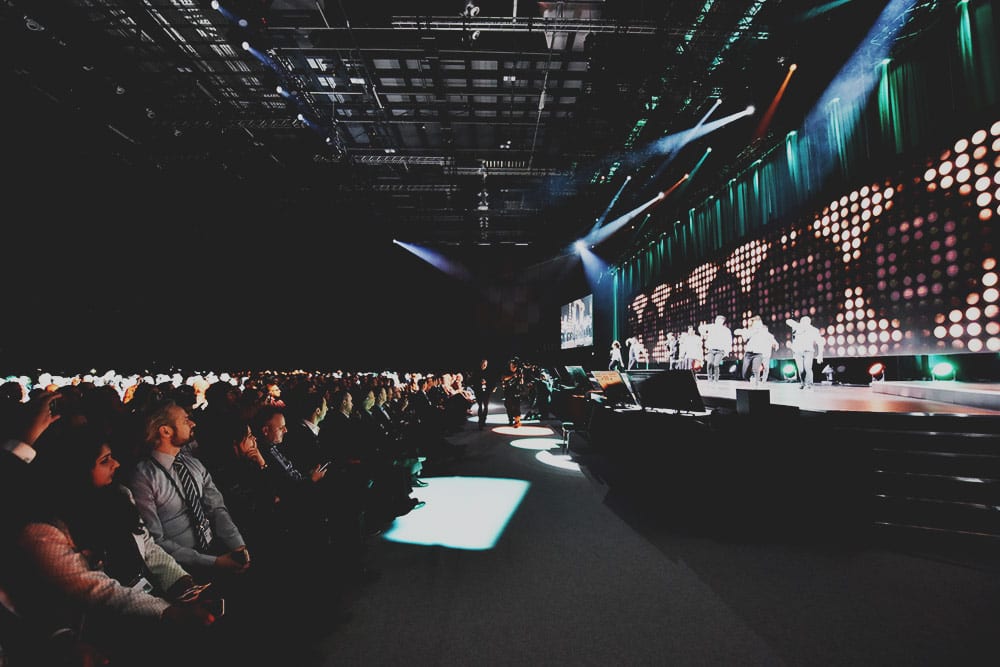
Ever caught yourself zoning out on a speaker you were excited to hear? Me too. I mentally kick myself every time this happens. But attention is a curious child. It wants stimulation; and the second it stops getting what it wants, it starts looking for something new.
Presentation neuroscientist Carmen Simon calls this habituation. It means we get bored when things stay the same. Our minds need variation to say engaged, to stay stimulated. Dr. Simon recommends changing something about your presentation style every three minutes.
Whether you’re hosting a guest speaker, or presenting yourself, any event can benefit from a few creative ideas that keep the audience alert and their attention sated. Courtney and Tim from the Poll Everywhere team shared their strategies during their Mastering Poll Everywhere at live events webinar.
I have expanded on some of their ideas below. They all use Poll Everywhere in some way, but most can be tweaked to work without an audience response system. Try these creative event ideas in your next presentation, and if you have your own suggestions let us know @polleverywhere.
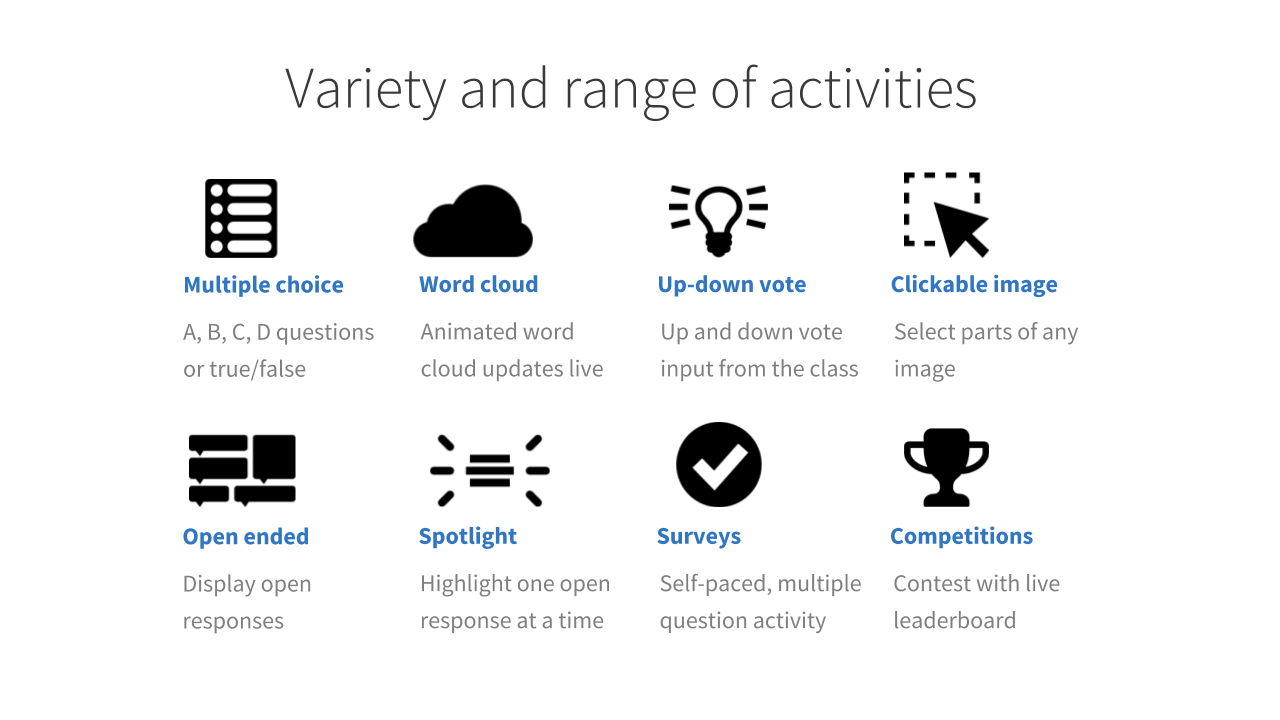
1. Improve retention with a trivia contest
“All right, let’s play a quick game to see who has been paying attention.” This is my favorite to cap off a long presentation. A trivia contest lets me see what the audience does (and does not) remember. The audience gets to use what they learned and improve their retention. And best of all: it’s fun.
Personally, I like to announce (or tease) the trivia contest at the start of the presentation. This clues everyone into the fact that they should pay extra attention if they want to win stuff at the end. People love winning stuff. However, my boss will sometimes catch the company off guard by spinning up a surprise trivia contest during our weekly all-hands meeting.
However you decide to frame your contest, Poll Everywhere makes it easy to create questions and get live results. Use the Competitions activity to create your questions. The audience responds on their phones or devices. And the results appear in real time in an animated chart. Everyone can follow the action with a leaderboard the updates between questions with the new point totals.
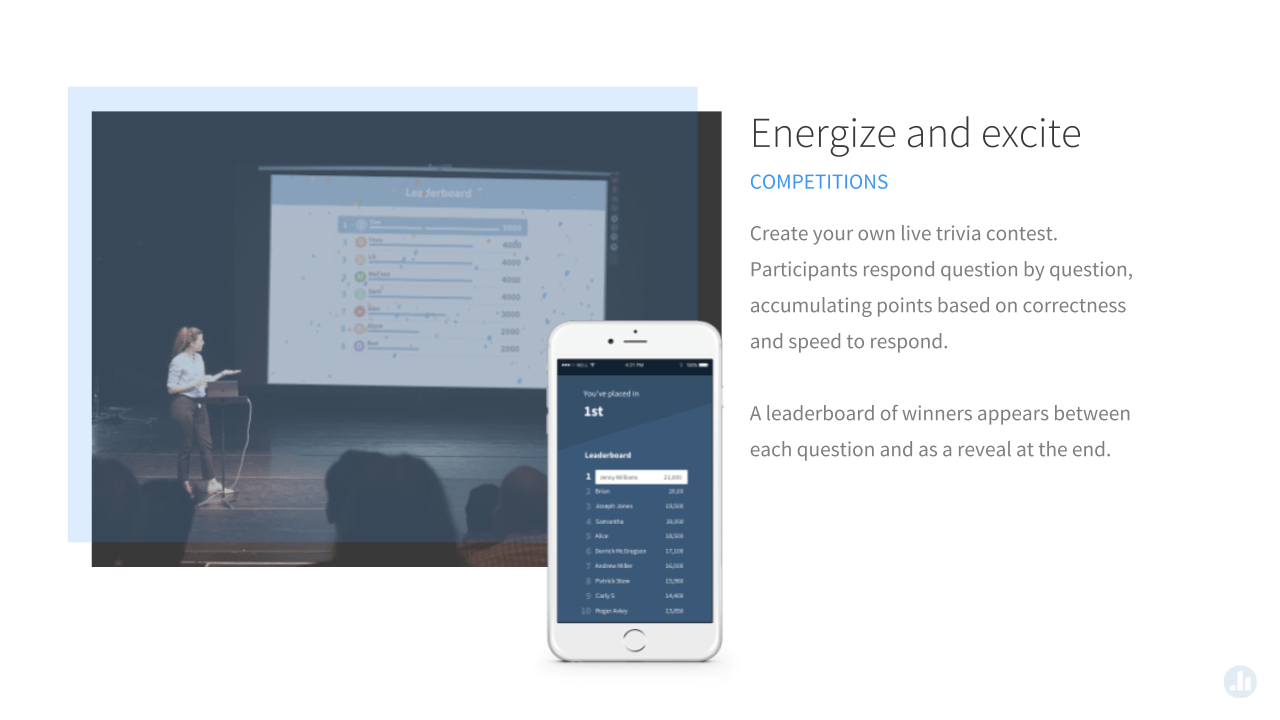
2. Bookend key topics with a single question
Some presentations don’t need an entire trivia contest to get their point across. In many cases, a single question will do. I once started a presentation about why Poll Everywhere customers downgrade by asking that exact question. Everyone took a moment to send in their answers; But I didn’t reveal them right away. Instead, I launched into the presentation as planned with the audience’s curiosity peaked.
At the end of my presentation — after I explained all the findings and results — I finally revealed the responses. We used those as a starting point for a conversation about our customers and what I had just presented. All responses were anonymous, so no one had to worry about looking foolish.
Bookending your presentation, or a section of your presentation, this way is an easy tactic for countering habituation (discussed at the top) and helps keep the audience alert and engaged. In her book Neuroscience for Learning and Development, author Stella Collins says “[Questions] tend to promote eustress; if you’re being asked questions you tend to be more alert than if you’re just listening.” If you can get the audience thinking about what you’re saying, you can get them to remember it.
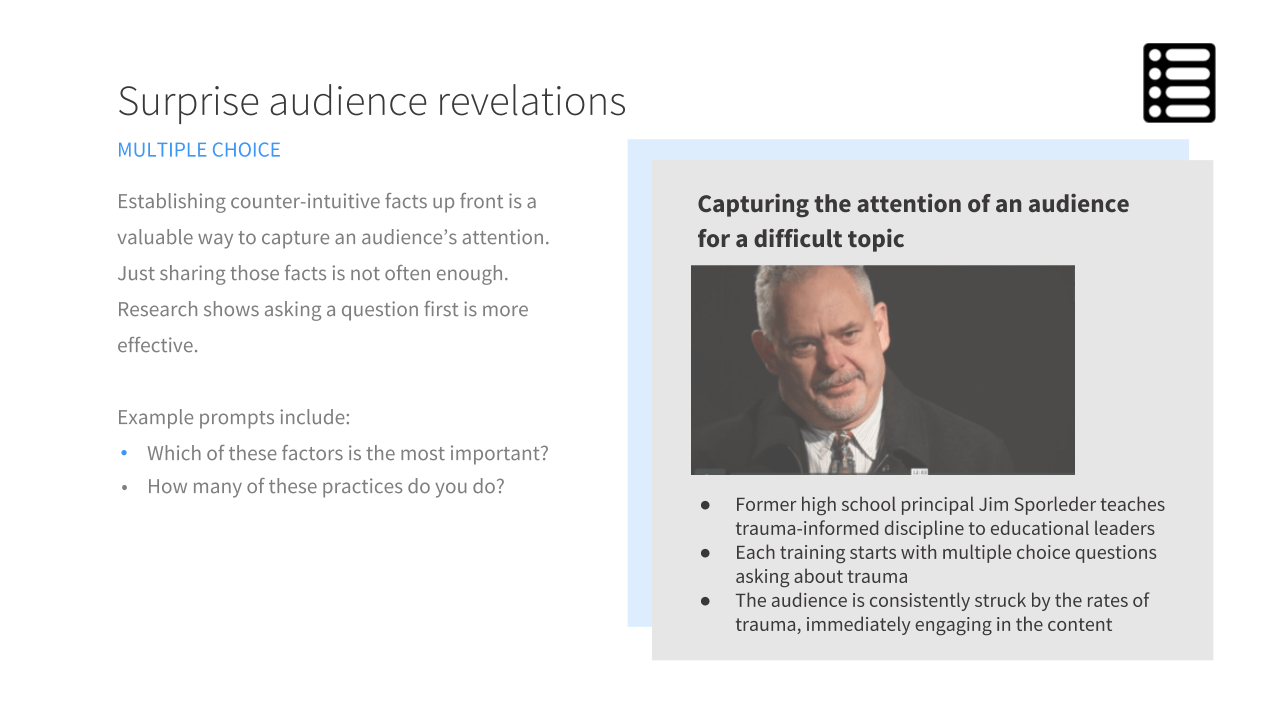
3. Promote collaboration with a live word cloud
Successful meetings and events require cohesion around a common goal. Build that cohesion out in the open with a live word cloud powered by Poll Everywhere.
A live word cloud is one the audience builds together in real time. You create the prompt and the audience provides the words. Words that receive duplicate entries grow larger in the cloud. This gives you a clear indication of how the room feels. It’s a great way to break the ice and help the audience get to know each other.
A few example prompts include:
- What part of your role most inspires you?
- What is the most important factor for success?
- How are you feeling about this?
In my experience, this activity works best when you ask the audience to limit their response to a single word. This gives you the clearest indication of which ideas are prevalent in the crowd.
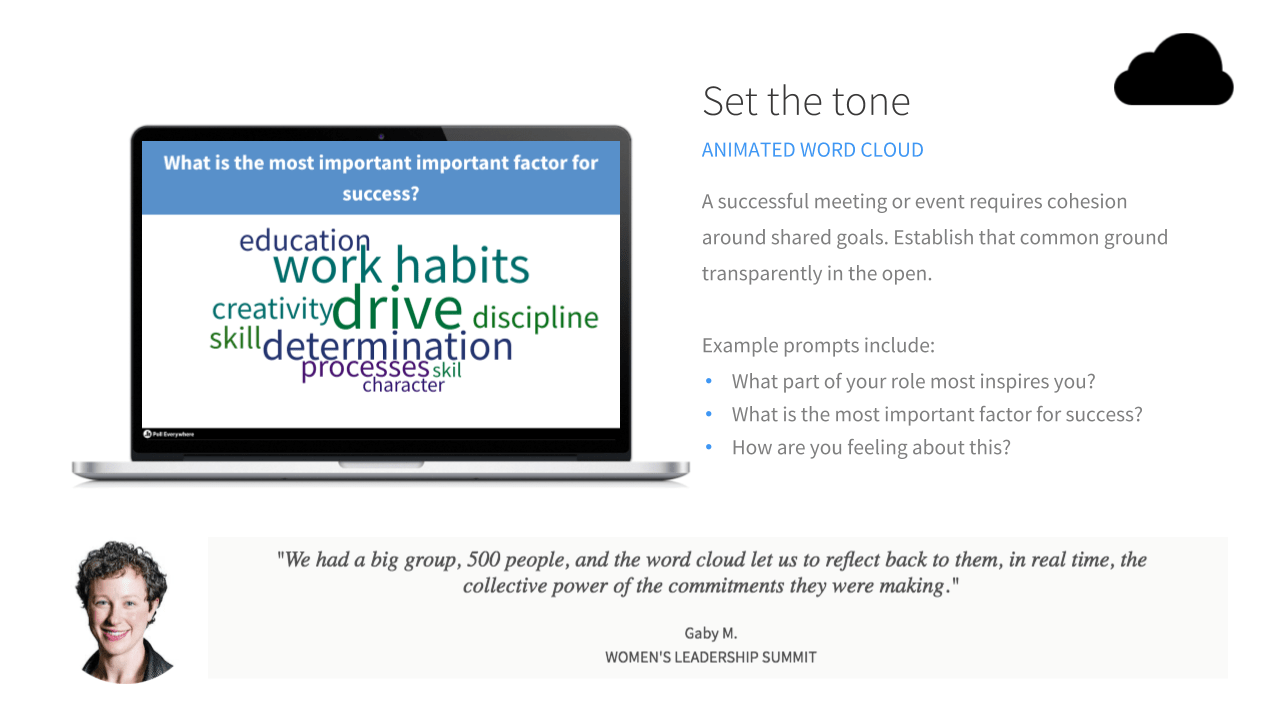
4. Rethink Q&A sessions as audience-wide activities
I used to attend a lot of conferences and universally loathed the Q&A sessions that followed every talk or panel. I’m sure everyone reading has experienced one of the following: someone asks an unrelated questions and is politely declined, someone cannot remember their question and rambles, or someone starts with “I actually have a three-part question…”
A transparent prioritization of questions would make better use of both the speaker and audience’s time. Unlike most of the other items on this list, this is pretty difficult to achieve without a tool built for situations like these — a tool like Poll Everywhere Q&A.
Q&A is a special activity type that lets the audience respond by typing in their question and submitting it to a shared list. Everyone can then see the other questions and upvote their favorites. Questions with more votes rise to the top of the list. This method lets you hear from the entire room at once in the time it would take one person to get a microphone and respond aloud.
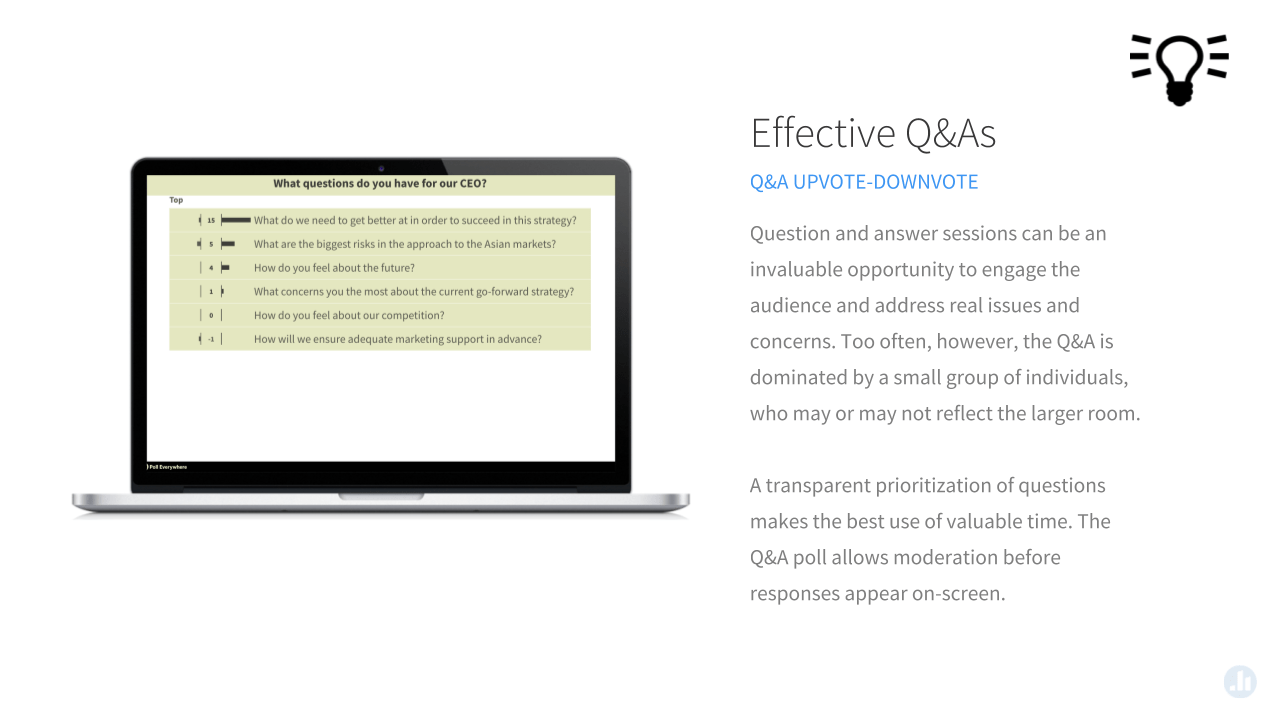
5. Survey the audience during your talk, not after
If you need to survey the audience, do so before you lose their attention. That’s the lesson Jason O’Rouke, the Senior Director of Policy and Federal Affairs for the Georgia Chamber of Commerce, learned after two years on the job.
O’Rouke’s goal was collecting and prioritizing concerns from Georgia’s business community. But after sending roughly 30,000 emails, the Chamber was lucky to get 250 responses.
That all changed when O’Rouke started surveying business owners on-site during 25 townhalls across the state. He asked his survey questions during the event itself rather than relying on follow-up emails. Response rates rose dramatically, and the Chamber got the information it needed to inform policy.
The takeaway: presentations are as much an opportunity for you, the presenter, as they are for the audience. If you want to learn what people thought of your talk, or how much of it they remember, ask them about it immediately after you finish, but before they leave their seats. Save the results for your follow-up email, which a curious attendee is far more likely to read.
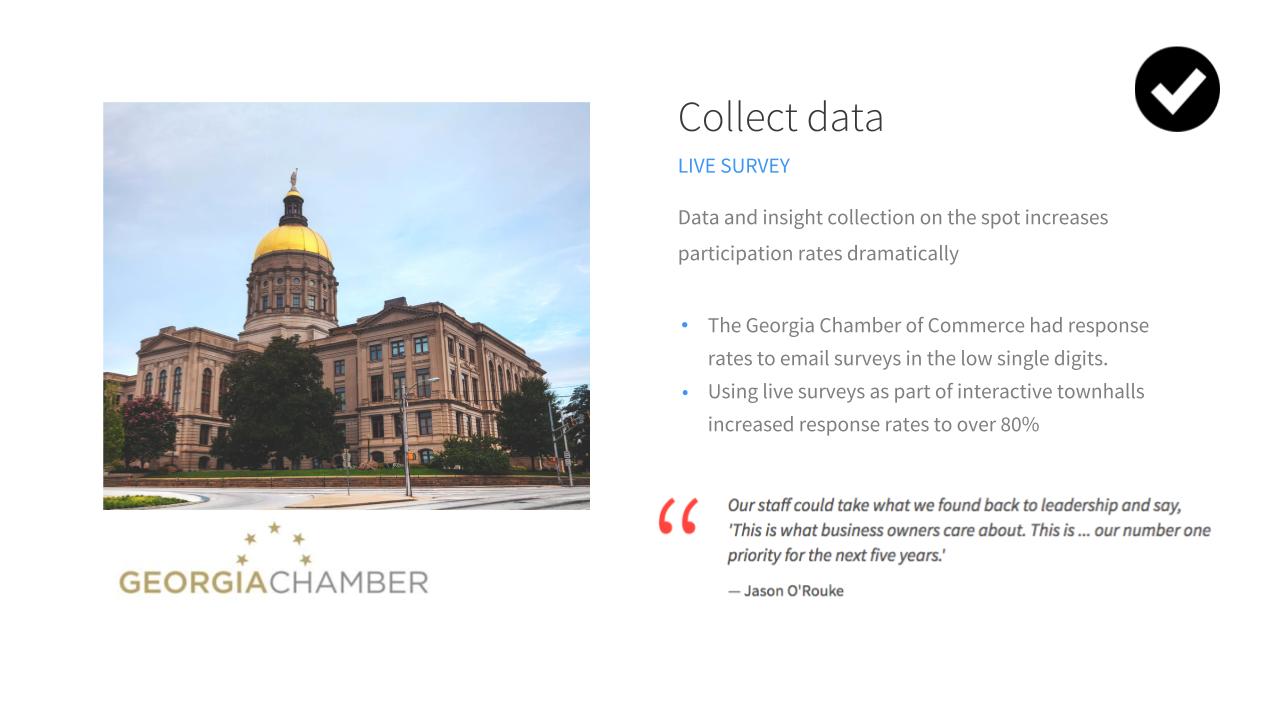
Need more creative event ideas for your next conference or presentation? Create a Poll Everywhere account today and discover the benefits of live audience engagement. Host more engaging and impactful meetings and presentations today.
